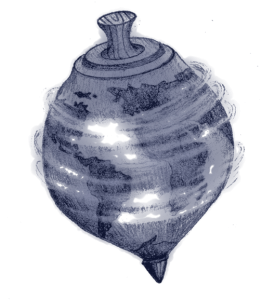 Contemplative Experience
Contemplative Experience

 o contemplate is to gaze long and thoughtfully, to weigh and consider, to think deeply and quietly, perhaps to sort and fit things together in one’s mind. And those are the practices we want to nurture in helping others develop a closer personal relationship with our planetary oasis. Where are we? What are we? Why are we? Is there a human role here (and corresponding responsibility) to consider in how we live? Taking time to contemplate our place in space – its natural systems, communities, and passengers – is like pressing the pause button in our personal narrative unspooling day by day. And pausing makes the going more meaningful and memorable. As the poet, John Milton, expressed it: “Wisdom’s best nurse is contemplation.” Unfortunately, many people want to pull away from prolonged thinking just when we need more of it. For the average human voyageur on this planetary journey there are many ways for keeping nature in the background (meditation, prayer, exercise, electronics), but very few for getting closer to its heart.
o contemplate is to gaze long and thoughtfully, to weigh and consider, to think deeply and quietly, perhaps to sort and fit things together in one’s mind. And those are the practices we want to nurture in helping others develop a closer personal relationship with our planetary oasis. Where are we? What are we? Why are we? Is there a human role here (and corresponding responsibility) to consider in how we live? Taking time to contemplate our place in space – its natural systems, communities, and passengers – is like pressing the pause button in our personal narrative unspooling day by day. And pausing makes the going more meaningful and memorable. As the poet, John Milton, expressed it: “Wisdom’s best nurse is contemplation.” Unfortunately, many people want to pull away from prolonged thinking just when we need more of it. For the average human voyageur on this planetary journey there are many ways for keeping nature in the background (meditation, prayer, exercise, electronics), but very few for getting closer to its heart.Life in Boxes
Today, many people lead such busy lives that they don’t take time to interact with the natural flow of life that supports them. It has become little more than background scenery on the stage of their daily routines. They awaken each day in a climate-controlled box, go into an attached box and use a small horizontally-moving box parked there to travel to a large box some distance away. Leaving their small horizontally-moving box underneath it, they enter a small vertically-moving box to ascend inside this tall box, where they spend their day in another small box looking at images on a … box. At the same time, nearly constant chatter has come to dominate people’s perception. They appear addicted to nonstop verbal and visual stroking of one another (if not physically, then electronically), and thus miss the incredible richness of the natural systems and communities that birthed them. Even when people go to a natural place, a kind of herd response often keeps them apart from it. At best, their perception of nature becomes a seasonal decoration in their lives, instead of the source of their daily sustenance. Much has been written in the past decade about re-connecting with nature, but what we need to do first involves disconnecting with other humans.
 Our contemplative experiences are not designed to free people up from thinking. They are designed to encourage them to think more deeply about more important things that tie us into the planet’s film of life. We live on a biotically-rich “top” that was set spinning in an incredible cosmic explosion billions of years ago, and rotates daily now at 25,000 miles an hour through the life-giving rays of a nearby star. The umbilical cord that was attached to our birth mother served as our initial connection to the primeval planet and its salty seas where life began. Our father’s sperm swam to our mother’s egg, and we bloomed under water in her belly. (The embryo of a fish and that of a human are remarkably alike.) We are water-born creatures that crawled out eventually upon the land, while our salty tears bear silent witness to such origins. We can cut the umbilical cord to our parental mother, but not to our Earth Mother. For all of our days here we will have an invisible umbilical cord of energy and materials attached to the thin film of life covering this spinning, still-cooling molten mass. When that cord is cut, we die. What we need today are not more ways to disconnect and let go – either mentally or physically – but more ways to re-connect and re-cognize our umbilical attachment to the planet. Re-connecting without re-cognizing will not save our beloved Earth.
Our contemplative experiences are not designed to free people up from thinking. They are designed to encourage them to think more deeply about more important things that tie us into the planet’s film of life. We live on a biotically-rich “top” that was set spinning in an incredible cosmic explosion billions of years ago, and rotates daily now at 25,000 miles an hour through the life-giving rays of a nearby star. The umbilical cord that was attached to our birth mother served as our initial connection to the primeval planet and its salty seas where life began. Our father’s sperm swam to our mother’s egg, and we bloomed under water in her belly. (The embryo of a fish and that of a human are remarkably alike.) We are water-born creatures that crawled out eventually upon the land, while our salty tears bear silent witness to such origins. We can cut the umbilical cord to our parental mother, but not to our Earth Mother. For all of our days here we will have an invisible umbilical cord of energy and materials attached to the thin film of life covering this spinning, still-cooling molten mass. When that cord is cut, we die. What we need today are not more ways to disconnect and let go – either mentally or physically – but more ways to re-connect and re-cognize our umbilical attachment to the planet. Re-connecting without re-cognizing will not save our beloved Earth. 
